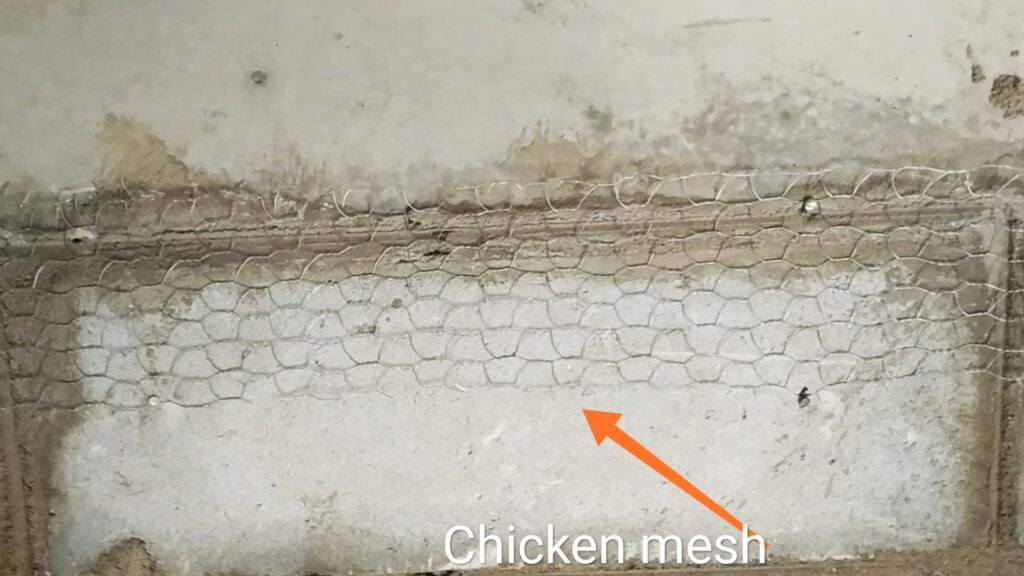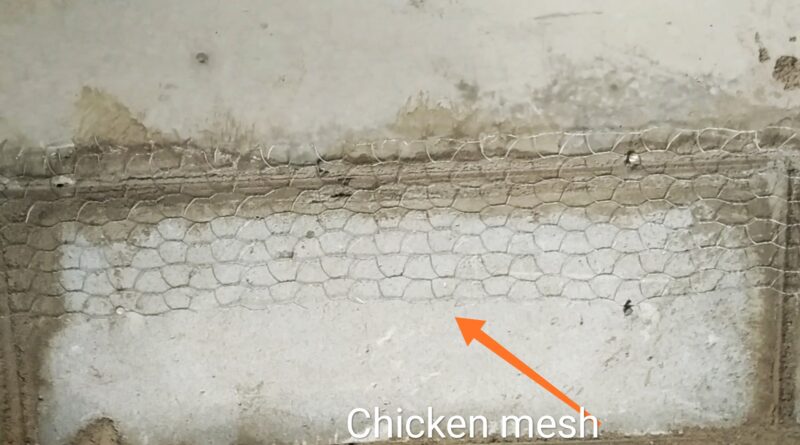Why We use chicken mesh in plastering?
To prevent crack in plastering work we use chicken mesh at junction of different material such between wall and column junction where coefficient of thermal expansion of different material is different and due to that chances of crack after plastering is bound to occur that’s why we use chicken mesh.

Chicken mesh has the same function as reinforcement does in concrete. It strengthens the plaster against forces . Mainly to avoid the crack formed due to insufficient gap filling between RCC column & Brick wall joint.
Therefore we used chicken mesh in plastering and also due to this there will a proper bond formation between finishing surfaces of RCC column & Brick wall.
Chicken mesh in old plaster was used to prevent cracking and hold the plaster together should the house experience settlement. The mesh also helps fight cracks caused by the twisting of plaster laths. Nowadays, I use galvanized wire mesh screwed to old wooden lath to protect my repairs against cracking.

Note :
1.In exterior plastering you should not use chicken mesh if the plastering is thinner than 20 mm, since the mesh isn’t galvanized enough and gives you risk for rust expansion and then the plastering will fall down before it’s due.
2.And if chicken mesh is not fixed properly it may cause hair pin crack on the wall
Properties
- Its hexagonal shape prevents the formation of internal stresses.
- Chicken wire has specific properties for plastering use. Chicken wire mesh is formed by twisting two adjacent wires at least four times, forming a strong honeycomb mesh structure. So, it has a high strength and durability. Even if a place is cut off, it will not lead to the entire chicken mesh structure destroyed. When using for plastering, plaster layer and the reinforcing metal layer have different thermal expansion coefficient.
- when we use plastering effectively prevents plaster layer drying out and cracking.
Specification
- The diameter of the wire mesh from 0.6 to 2.0mm
- Materials: galvanized low carbon wire, annealed wire
- Mesh size (distance between the faces of the hexagon ) from 13 to 50mm.

